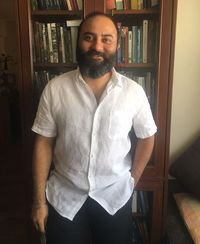It is hard to situate Rammat Gammat (My Best Friend’s Shoes) into a genre. A short film from the house of Drishyam Films, it is at once a moving ode to football, friendship and loyalty while being a subtle exploration of caste and class barriers and how it socially conditions growing children. Except that some friends overcome these social barriers.
Set in the lush rural environs of Western Ghats in Gujarat, Rammat Gammat is a heart-warming tale of two close friends who love their game of football, but are made to confront their social realities. The film itself stars state-level football players.
The Gujarati-language film won a "Special Mention" in the children's section this year at the 64th International Short Film Festival Oberhausen in Germany, one of the oldest short film festivals in the world and considered the Mecca for short films. This month, Rammat Gammat will be seen in three international festivals, including the ongoing Busan Children's Festival (South Korea), Stony Brook Film Festival (US) and One Country One Film (France).
In an interview to THE WEEK, filmmaker Ajitpal Singh talks about why he chose Gujarat as the setting of his unconventional football film, his early years in the state at the height of anti-Sikh sentiment in the country, and why the story is best suited for an 18-minute run.
In a recent news article, you spoke about how your own experience as a Sikh child growing up in Gujarat in 1985 "at the peak of anti-Sikh sentiment in the country" informs much of the pathos in the short film. Can you tell us how football for you was a salve and a social leveller back then?
It was not really football but books that were my salve and social leveller. I was an avid reader. I would read anything that I could lay my hands on, including comics like Indarjal, children’s magazine like Chanda Mama, Suman Saurabh and Champak and lots of Russian books along with classic science fiction adventures like Twenty Thousand Leagues Under, and to my own surprise newspapers like Punjab Kesari, Gujarat Samachar and even serious news magazines that only adults would read. I was a very curious kid and I knew a lot more than most of my classmates and sometimes even teachers too, which gave me a sense of pride. When it came to sports I was good at high jumps and Kabbadi, but I was never really given a chance to be part of the team at a competitive level so I never took them seriously.
What is the football culture in Gujarat like, considering we only hear about West Bengal, Kerala, Goa as football-crazy?
That was the most interesting part of making this short film. In fact we wanted to base it in Bengal or Goa but the budget constrains did not allow it, so when a friend of mine offered his farm house to stay and make a film at Wilson Hill in Gujarat, I just went to see if it’s feasible to make a film about football in a place where nobody plays football. Authenticity means you need to really find the roots for the story in the locations you place it. Luckily we found a thriving football culture. I can’t speak of the whole Gujarat, but I can say that kids in Valsad, Vapi and Surat, Ahmedabad play football as much as they play cricket. And these regions have created many players who play at state and national level. In fact there is an area called Rander in Surat where children from well off families and slums come every evening to play football and there are tournaments happening every few months.
The film has some extremely evocative shots taken in the Western Ghats. As a filmmaker, did you always envision a heart-warming tale of friendship and football to unfold amidst breathtaking scenery?
Any storytelling medium needs to describe how a character is feeling or thinking, in fictional writing you do it by describing the thoughts or emotions. In theatre you do it by exaggerating the emotions or thoughts with your body movements, but in films you have images at your disposal to do the same thing. If an image is just beautiful it won’t work, but if an image also evokes the same emotion in you that the character is experiencing, then it works. So yes, as a team Tojo (Director of Photography) and I set out to make a film in which we will say less and show more.
Rammat Gammat could just as well be extended into a feature-length film. I could not help wishing it was a longer film, in the way it tackles specific nuances about social stratification in the guise of celebrating football. How much did you not want it to be a short film?
I do have a few interesting feature scripts but I always wanted Rammat-Gammat to be a short film that leaves an after-taste and makes you think about what you just saw and would invite you to watch it one more time and discover something new.
Sports films in India tend to be hagiographical, jingoistic and competitive. When will it learn to be more restrained, easy-going and contemplative? Do you see that happening already?
Not really, but it’s not just the problem of sports films. Very rarely we see a mainstream film that is layered, restrained and contemplative. In that regard regional cinema is miles ahead of the mainstream cinema and if the success of regional cinema continues, I hope, it will encourage the film studios to take notice and allow fresh talent to make films.



